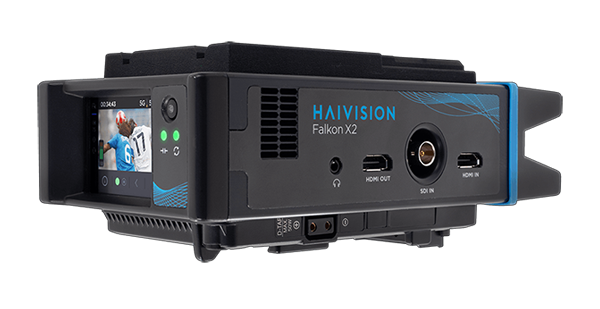The way we communicate at work has been changing for some time, but the last 18 months have pushed this evolution into overdrive. 2020 forced the hand of many businesses to adopt remote video solutions, driven by the need for tools and processes that enabled their teams to work from home during the pandemic.
As we approach the end of 2021, hybrid working – involving a mix of remote and office-based work – has become the norm. According to Accenture, 83% of workers now prefer a hybrid work model, while McKinsey reveals that 52% of US workers would prefer a more flexible working model after the pandemic. At our recent Virtual Summit, nearly half (47%) of attendees said more than 50% of their organization was working from home, with 80% saying more than 25% of their workforce are.
With so many employees choosing to work remotely, it’s no surprise that the use and adoption of video at work has grown exponentially. And this growth is expected to continue in the coming years, with the value of the enterprise video market predicted to increase from $16.4 billion in 2020 to $25.6 billion by 2025. Other reports suggest it could even reach $48 billion by 2026 as the need to connect and engage remote workforces continues to rise.
However, although the hybrid model has quickly become a normal way of working, it’s still new territory for many organizations. So, with all this in mind, why is video so important for engaging a hybrid workforce, and what are the key considerations for choosing an enterprise video platform that meets brands’ current and future needs?
The Challenges of a Hybrid Workforce
It’s no exaggeration to say that the way we work has been irreversibly transformed. The vast majority (87%) of businesses say they will embrace greater flexibility post-pandemic, with most planning a hybrid onsite/remote-work model. Having a hybrid workforce means connectivity and remote solutions are more important than ever, as businesses can’t afford to overlook those employees that are based offsite.
The same McKinsey study referenced above found that a loss of connection to colleagues (44%) and reduced collaboration for individuals and teams (43%) are two of employees’ biggest fears regarding the future of remote work. As such, communication and connectivity will be vital to keeping employees happy and ensuring that the increased productivity levels seen over the last 18 months are maintained.
This is particularly important when it comes to engaging younger generations such as millennials and Gen Z, which are continuing to have growing influences on the modern workforce. Millennials and Gen Z are more likely than any other generation to say they want more frequent communication (19% vs. 14% of Gen X and 13% of Boomers) and greater transparency (23% vs. 19% of Gen X and 16% of Boomers) from their company’s leadership.
The occasional email from leadership will no longer cut it – especially when employees are working remotely. As well as wanting to see a more regular message, the younger workforce also wants to see a face go alongside it. Video, therefore, provides an opportunity for businesses to effectively engage these workers and attract new, young talent.
However, there is currently a major chasm in the way executives and employees perceive the frequency and effectiveness of internal communication efforts. For example, 54% of high-level execs say that they stream major company updates (like town halls and all-hands) at least weekly – but only 20% of employees agree. Clearly employees are missing the message. If businesses don’t embrace secure, high-quality enterprise video in the right way, they risk facing a disconnected and disengaged workforce.
How to Choose an Enterprise Video Platform
Many of the challenges facing organizations as they adapt to a hybrid workforce can be addressed through video. The key is understanding how an enterprise video platform can have a material impact on business success.
At a technical level, enterprise workflow architects need to look at how they integrate remote video solutions on a permanent basis and consider several key criteria. For example, an effective enterprise video platform should be easy to implement, user-friendly, and simple to manage. It should also be compatible with an enterprise Content Delivery Network (eCDN) to enable efficient video distribution across multiple enterprise locations and to remote employees.
Furthermore, factors such as low latency, reliability, and security are all vital. This is what will enable businesses to deliver a production-quality video experience that matches the moment and the brand. This isn’t always achievable with platforms like Zoom but can be delivered through an enterprise video platform that eliminates lag, jitter, and other connection issues. Having such a platform in place offers a powerful way to boost communications within an organization, and higher quality video leads to higher levels of engagement around your messaging. Leadership can share vital news and company announcements through real-time video feeds of company-wide meetings, thereby aligning employees with the organization’s purpose and goals.
Regular video communications can also serve to reinforce corporate culture, underline company values and motivate employees wherever they may be. With video and streaming options for corporate communications and broadcast-quality all-hands, organizations can help their employees – both in the office or working remotely – to stay informed and feel included and valued.
Ultimately, having a hybrid workforce can be challenging in terms of team connectivity. But embracing a modern enterprise video platform for strategic communication can have powerful effects on employee engagement, collaboration, productivity, and many other key factors that contribute to long-term business success. Perhaps most importantly, it connects people together – as well as to their leaders and their company – at a time when human connections are more important than ever. The way we work is changing fast, so we can’t afford to let the way we communicate fall behind.


























